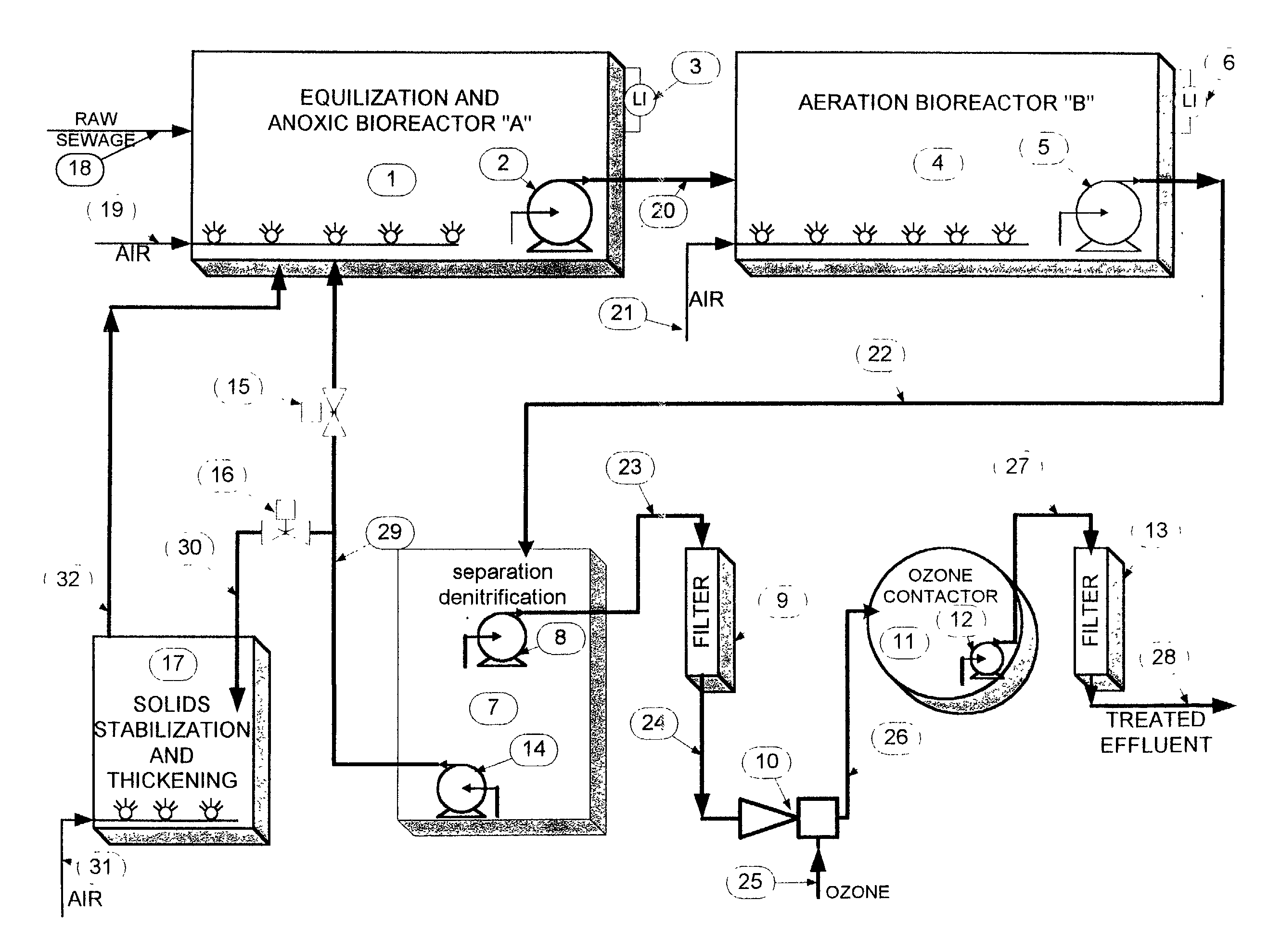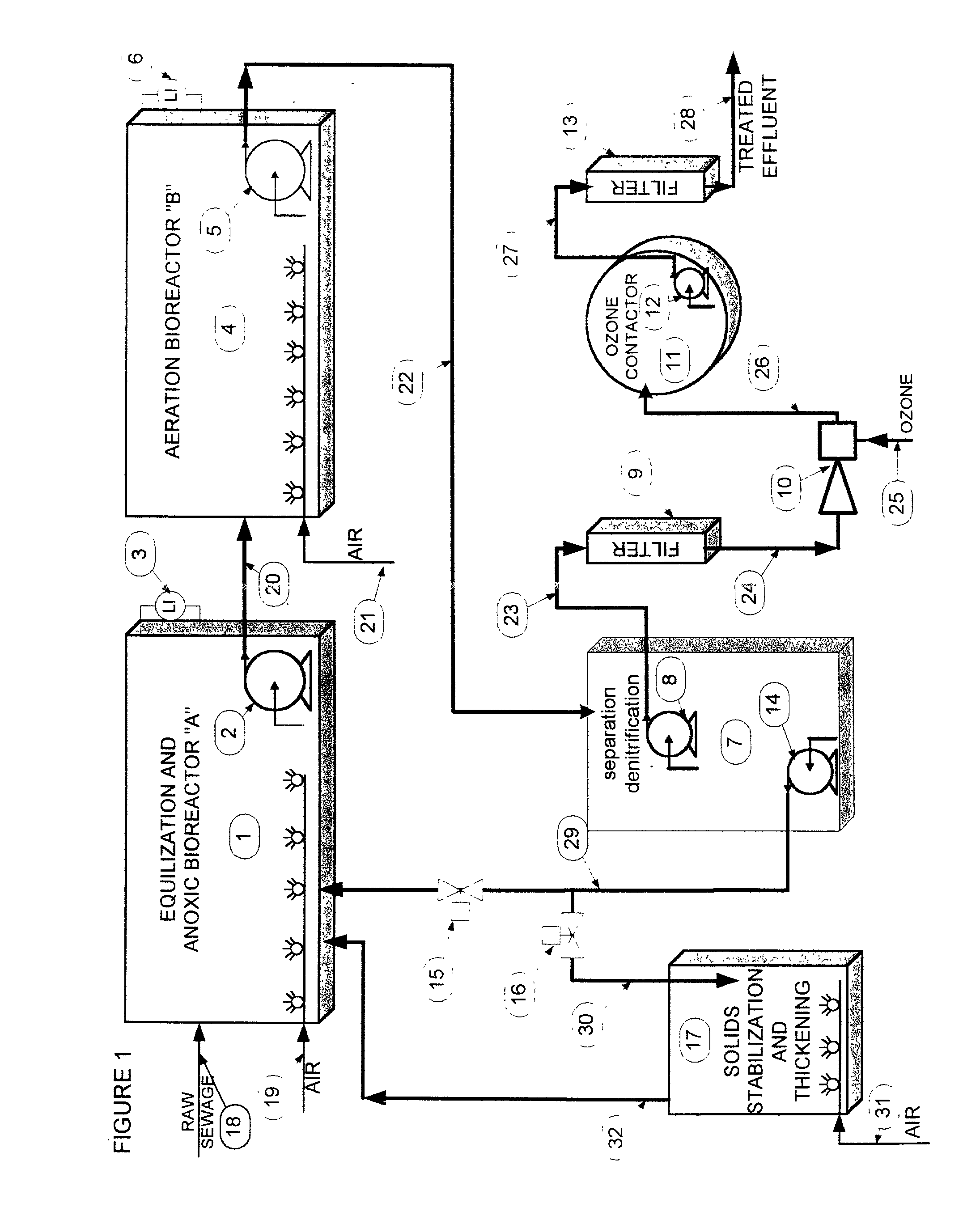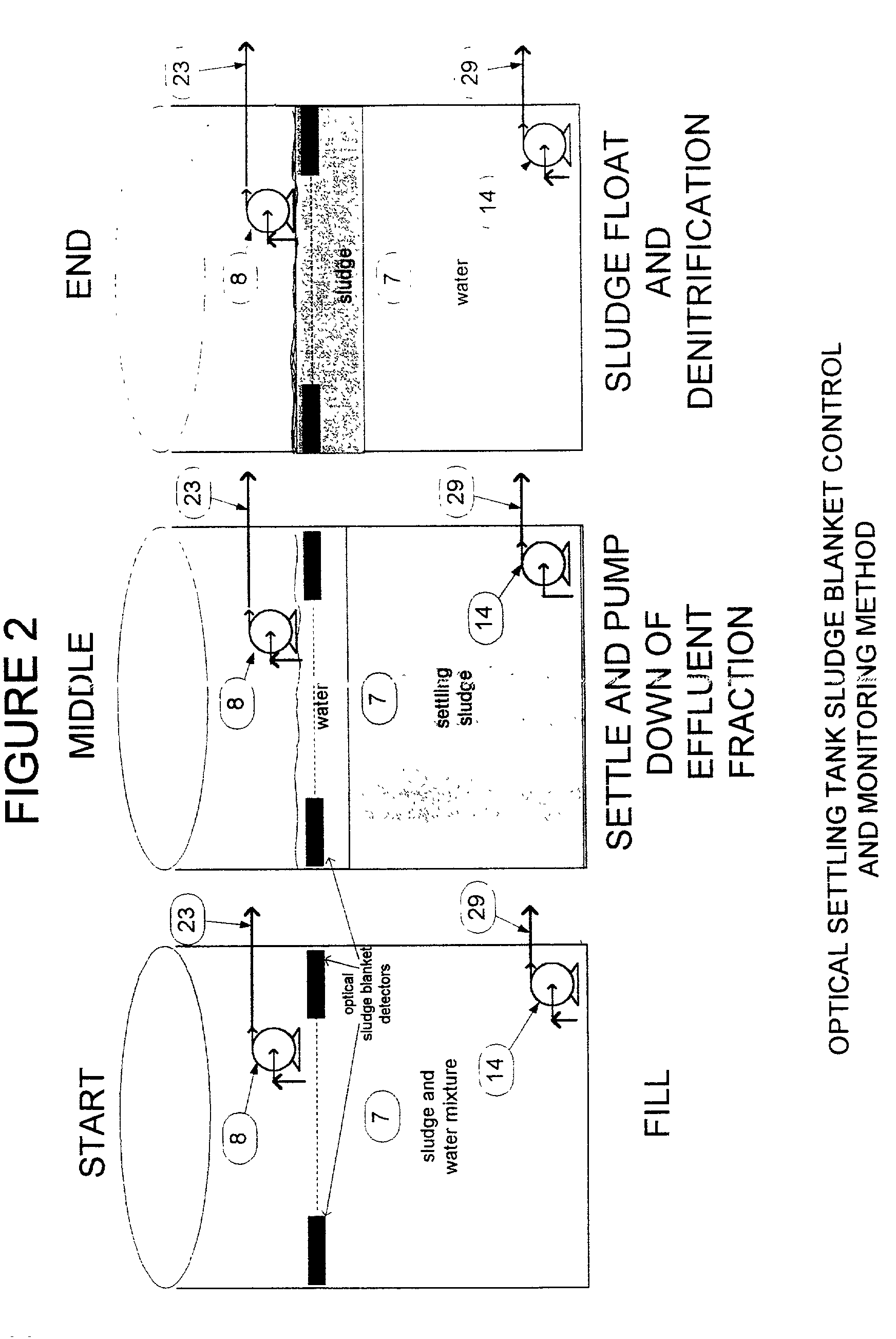Modified intermittent cycle, extended aeration system (miceas)
a technology of aeration system and modified intermittent cycle, which is applied in the direction of biological water/sewage treatment, sustainable biological treatment, filtration, etc., can solve the problems of increasing the size of the system for a specific flow, not being able to meet the optimal conditions for rapid bod removal, and requiring complicated relay and timer logic. large and often unreliable, and the sequence and timing of the various batch functions are not ideal
- Summary
- Abstract
- Description
- Claims
- Application Information
AI Technical Summary
Problems solved by technology
Method used
Image
Examples
Embodiment Construction
:
[0015] Raw sewage 18 is introduced into the equalization and anoxic bioreactor 1. The size of this reactor is approximately 30% of the total daily sewage volume. This reactor is used to normalize the loading to the remainder of the process and supplies the anoxic environment for further denitrification of the return stream 29 from the separation / denitrificati-on vessel 7. The equalization and anoxic bioreactor1 is agitated through periodic minimal air sparging 19. A minimum 50% volume is maintained bioreactor 1. The anoxic conditions and the carbon source supplied by the raw sewage, any nitrates not converted to nitrogen in the separation / denitrification vessel 7 will be converted by the aerobic heterotrophic bacteria maintained in the mixed liquor residing in the equalization and anoxic bioreactor 1. Depending on the level measured by level indicator 3, the PLC control system automatically starts pump 2 and pumps a portion of reactor 1 to the aeration bioreactor 4 through line 20....
PUM
| Property | Measurement | Unit |
|---|---|---|
| time | aaaaa | aaaaa |
| pH | aaaaa | aaaaa |
| turbidity | aaaaa | aaaaa |
Abstract
Description
Claims
Application Information
 Login to View More
Login to View More - R&D
- Intellectual Property
- Life Sciences
- Materials
- Tech Scout
- Unparalleled Data Quality
- Higher Quality Content
- 60% Fewer Hallucinations
Browse by: Latest US Patents, China's latest patents, Technical Efficacy Thesaurus, Application Domain, Technology Topic, Popular Technical Reports.
© 2025 PatSnap. All rights reserved.Legal|Privacy policy|Modern Slavery Act Transparency Statement|Sitemap|About US| Contact US: help@patsnap.com



